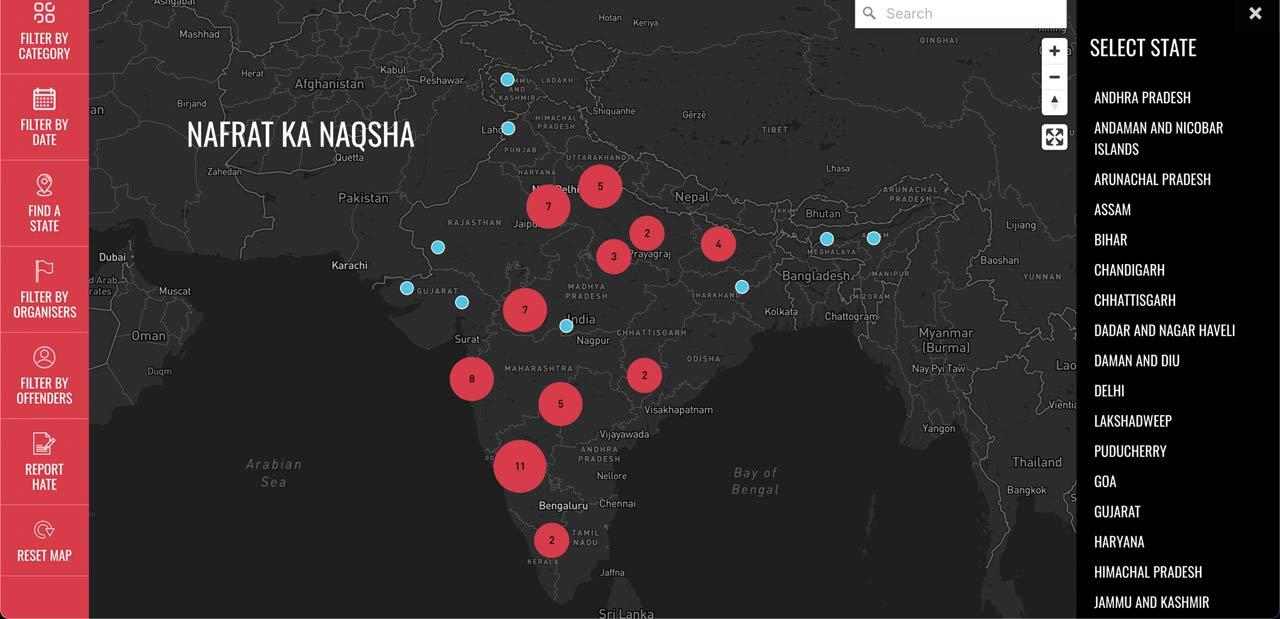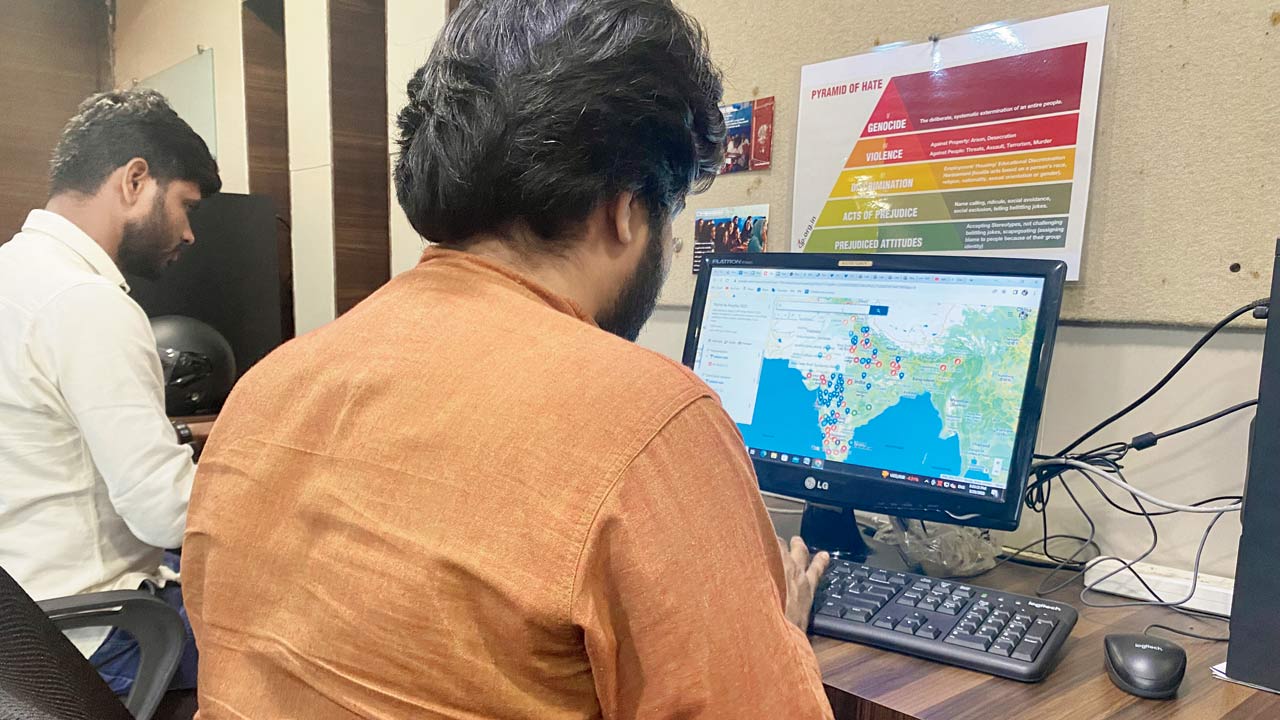An initiative to chart incidents of violence across the country hopes to rouse citizens to intervene and protect India’s democratic social structure

CJP’s Nafrat Ka Naqsha, online since February 2021, has evolved from a prototype Peace Map, a seven-stage conflict management product. It aims to warn, predict and prevent violence across India. Map courtesy/Citizens for Justice and Peace
Hate speech has the characteristic of poisoning the social atmosphere,” Teesta Setalvad tells us over a video call. The civil rights activist—and secretary of the Mumbai-based Citizens for Justice and Peace (CJP)—is talking to us about Nafrat Ka Naqsha, a one-stop hate map to plot incidents of communal, casteist, ethnic conflicts and gender violence in India. This recent addition to the hate tracking activities of the organization—spanning 25 to 30 years—has been on the CJP website since February 2021, With the aim to conscientise citizenry to intervene with the authorities, the map’s objectives are to track, monitor, register pre-emptive complaints with the police, the district collector, the News Broadcasting and Digital Standards Authority (NBDSA), and others, follow up on complaints, and press to file FIRs and prosecute. Citing the 1987 case of Hashimpura-Maliana-Meerut communal violence, Setalvad explains how analysis indicates that three to six months before an upsurge of friction, “hate speech was steadily used by individuals and organisations to ratchet up the public temperature and create an atmosphere of complicity among the wider majority, so that they don’t act to prevent violence, to save lives or to generate a counter-narrative against the stigma of hate.”

Given the laxity among authorities, who she believes granted impunity to hate-mongering organisations, it was important to take this stand as citizens, she says. “It’s important to do this on a regular basis,” she says, “because the assumption that a large section of citizenry is complicit with hate needs to be broken. Many of us believe that this kind of hate is damaging both to the stigmatised community and to all of us because it diverts attention from our democratic issues.” Moreover, the Love Jihad campaign, she says, “is frightening because it is eventually targeting women and their autonomy regardless of the community”

As a journalist, Setalvad always believed in taking note of deleterious trends harming the democratic setup and social fabric. She sees the map as a good way of illustrating emerging trends, like the spiralling of incidents during an imminent election. “We all know communal violence and divisive language has some connection with trying to polarise votes,” she says, “It’s well accepted in political analysis, but how do you establish that? One way is by creating data sets like this.” When this data representation is made available to other experts, it also enables creation of other such analyses and inputs.
 Teesta Setalvad
Teesta Setalvad
Unsurprisingly, there is a huge team behind the creation and updation of the map, which involves elaborate processes of authentication with assistance from reliable media and calls with authorities. Moreover, Setalvad points out that organisations such as the Sakal Hindu Samaj openly display their events on their websites, allowing CJP to tip off authorities. Ten percent of the incidents, however, are unverifiable because they occur in remote areas. On whether the map has served as an early warning system for prevention of hate crimes, she shares, “We are trying our best in Maharashtra right now, sending complaints and calling police stations, but not getting much response from the authorities. One good thing, though, is that registration of FIRs has now begun.” She recollects an incident at the Pirana dargah outside Ahmedabad, long before CJP’s digitalising efforts, where a concerted campaign by citizens and activists prevented a hate crime.
Earlier editions of Nafrat Ka Naqsha included a Love Azaad map that tracked attacks on inter-faith and inter-caste couples, but also generated counter narratives. “The Azaad map tried to say that even in the middle of all this hate, there are efforts that individual citizens can take to stop it,” Setalvad explains. She cites recent examples such as the drive launched by Mira-Bhayander citizens to expel the “hate virus” afflicting MLA Geeta Jain, who had participated in an event on March 12 where hate speeches were made; or the creation of counter communities like the band of farmers led by the All-India Kisan Sabha (AIKS). Their leadership issued a strong statement on March 16 against rising instances of hate speeches and the consistent attempts to stigmatise minority communities in Maharashtra, which was taken back by the farmers to their villages. AIKS spearheaded the protest march—consisting of 10,000 farmers—from Nashik to Mumbai this month to demand better prices for crops and changes to export policies.
Setalvad says while the matter of resources remains, CJP now plans to create bands of peace volunteers, including members of existing mohalla committees, to create counter narratives and intervene in sensitive districts, with proper training.
 Subscribe today by clicking the link and stay updated with the latest news!" Click here!
Subscribe today by clicking the link and stay updated with the latest news!" Click here!










